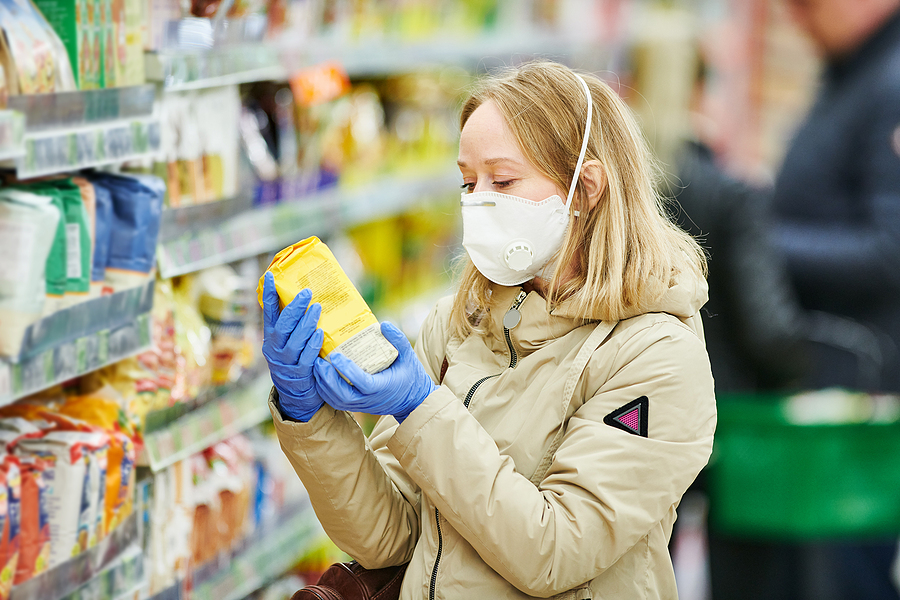The coronavirus outbreak has changed how consumers shop for groceries and what items they buy — they’re stocking up on pantry essentials, buying more food items online, and cooking more meals at home. But how does food packaging factor into their purchasing decisions? Are they more likely to read packaging labels now that their favorite products are harder to find?
In its first annual report, Shorr Packaging explores how food packaging and labeling influence U.S. consumers’ purchasing behaviors, both in-store and online. The research also covers how attitudes toward food packaging have shifted in recent months due to COVID-19.
Overall, the majority of consumers read food labels all (25%) or most (45%) of the time while grocery shopping. Furthermore, food packaging is “extremely important” to 34% of shoppers (rated a 10 on a scale of 1-10).
COVID-19’s impact on consumer behavior
During the pandemic, supply shortages meant that some of consumers’ preferred brands were out of stock, so they reached for unfamiliar brands instead.
Almost half of the participants in Shorr’s survey said packaging played a role in what new products they picked within the past few months. In the decision process, unique design (28%), eco-friendly packaging (27%), and the language on the label (23%) were the most influential packaging factors. Now that they’ve tried the newly discovered food items, 88% of consumers say they plan to purchase them again.
More than 60% of consumers noted changes in their grocery shopping behaviors in recent months, such as:
- Food packaging/labeling became a more significant factor in their purchasing decisions (41%).
- They plan to be more attentive to food packaging/labels in the future (66%).
- Product pricing became more important (55%).
Food packaging and online shopping
The pandemic also encouraged more Americans to shop online for household essentials like groceries. Of the 51% of respondents who used third-party grocery apps to buy food online, 62% purchased from unfamiliar brands within the last three months because of a product’s packaging, and 48% plan to buy new food products based on packaging when shopping online.
However, not everyone was pleased with their online purchases. According to the report, nearly half felt dissatisfied or upset because the product packaging did not match its online presentation.
How label claims influence purchasing
Consumers who’ve been cooking meals at home are looking for convenience. Shorr’s findings show that, over the last few months, products labeled as “pre-cooked,” “ready-made,” or “stovetop-ready” gained popularity — 42% of Americans bought more food products with these labels.
As for other label claims, some are more effective than others. More than 60% of consumers have paid more for products with popular label claims, of which the most influential are:
- Fresh (48%)
- No sugar added (45%)
- All natural/natural (41%)
- Whole grain/multigrain (37%)
- Organic (37%)
One out of three shoppers, however, avoided products with trending phrases like these, and males participants were 8% more likely to do so. When asked why they avoided certain claims, consumers most commonly said they associated them with higher costs (38%) or felt that the claims were misleading (34%).
The importance of sustainability
If the packaging clearly states that it’s recyclable or reusable, 58% of consumers are more likely to purchase that product, and 46% would pay more for it. Moreover, 76% of shoppers believe that “healthy” products should be packaged sustainably.
But there’s room for improvement. Almost 70% of respondents said they’d be more interested in food products that include specific recycling instructions on the package. And more than half of them would be more willing to leave a review for such products.
Opportunities to build trust
Unfortunately, the majority of consumers don’t trust food packaging — 64% said they felt misled or fooled by product packaging.
Nearly half of shoppers consider the ingredient list to be the most trustworthy packaging component. Other, less reliable packaging aspects include the brand or logo (16%), price (15%), and popular label claims (11.5%).
However, Shorr found that 46% of participants have purchased certain food items because of updated packaging and labeling. So if current packaging isn’t convincing consumers to buy, it might be time for a new look.
It pays to have photo-worthy packaging, too — 21% of consumers have posted selfies with their purchased food products on social media.
